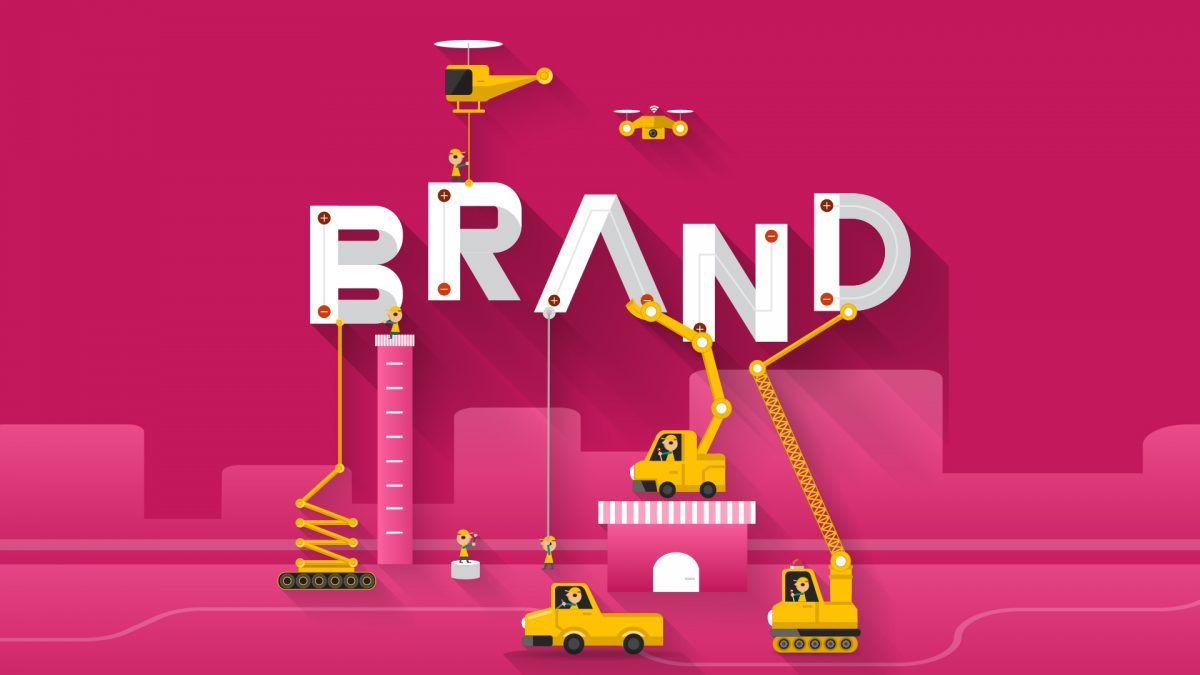What is branding price or brand pricing strategy? In this day and age, there is a special need for pricing tactics for the brand, each of which we must use specially. In this article, we present branding pricing strategies with examples.
Innovation; New Age Competitive Advantage
Advertising, product and web design, packaging, identity, strategy, and the promise of brand stability are all integral parts of marketing that are necessary but not sufficient to overcome the crisis. When risks surround us, we must use new technologies and research, and surveys to predict a competitive outlook to ensure our survival. We believe that innovation is one of the best examples of competitive advantage, and while it is always scary to take risks and try new ideas, in the 21st century we have no choice but to take risks.
“In 21st-century economics, taking risks is a necessity.” The beauty of innovation is that it’s scary. If it’s not scary, it probably isn’t innovative either. Creating a connection between business strategy and creative design is an art and we should all learn this art because, in today’s culture, a large part of a brand identity depends on visual elements (a brand’s visual identity refers to the visual aspects and elements of the brand). , Elements such as color, form, and shape of a brand that can not be conveyed through words and sentences).
In the last years of the twentieth century, the specifications of a product or service (what is it?) Were sufficient to attract customers. In the 1920s, this trend changed and the emphasis was on benefits (what does it do?). In the 1950s, what mattered was an experience (how do I feel?). Now in the 21st century, what attracts the customer largely depends on the brand identity: “Who are you?”. The question you have to ask is why does the customer prefer one product to another? And this is where innovation comes into play and its effects are felt.
the trust; The most important marketing factor for branding price
When the economy is in recession and people are shocked and looking for a way to cut costs, customers turn to brands that they trust. “Reliability” or brand credibility is more important than anything from the customer’s point of view, and then there is the feeling of joy and satisfaction that they feel when buying your product. These two characteristics are the foundation of trust, and trust is the most valuable attribute of an organization, especially in times of crisis.
A popular brand attracts customers who are trusted and committed. This is a unique advantage and a prerequisite for survival in the turbulent waves of the crisis. To have a strong brand, you need to learn from crisis experiences, evaluate yourself, study loyal customers, and understand their needs.
Building trust is the secret to the survivors’ success
We have worked with prominent brands in this regard and monitored their progress during and after the crisis. One of the best examples is the Bergreville restaurant chain, which at the time was initially a small business but later spread to the area. Their priority is the sustainability and supply of healthy and organic food, which has gained customer trust and has led to regular customers throughout the Northwest Region (Vancouver and Washington). They recognized the values of the people of the region and by emphasizing these values, ie healthy and environmentally friendly fast food, they opened their place among the customers.
example of branding price strategy
The Oddball.com store is also an example of efficiency in times of crisis. They changed their retail strategy and eventually became an online store. This change of approach paid off, and now those who are looking for stylish men’s shoes are choosing this store. Powell’s bookstore also gained a large following, simply because it survived the deaths of publishers by providing magazines to locals and tourists alike. Some businesses have become tourist attractions, such as the Voodoo pastry shop, which has attracted tourists to its doors due to its amazing donuts, special decor, pink boxes, and attractive logo. All of these businesses had one thing in common in their strategy: the constant trust and confidence-building that ultimately worked in their favor, even during a crisis.
Advantages of the crisis
The crisis is a good opportunity to review our brand strategy. Putting your hands together is not the answer. The crisis is a good time to research the competitive landscape and differentiate yourself from competitors. Do not rely on your estimates. Carefully research the customers who benefit from you.
Awareness of changes in customer needs is in the best interest of both your brand and your customers, as it proves to customers that all your efforts are focused on meeting their needs through the provision of up-to-date and creative products and services. In an age of technology explosion, you can use the tools available to predict change and redefine the market.
The effects of the crisis can be profound, But you can always keep your customers with innovation. You may have to reduce your brand budget; But thanks to the Internet and by participating in various marketing channels, you can create a strong identity for yourself and surpass your competitors.
is crisis affect branding price?

Crisis creates many opportunities; But these opportunities are often hidden behind problems, such as old marketing ideas or brand dilution. The study failed brands and outdated methods for useful information so you can produce creative content and communicate effectively. The first step is to review the brand. The next step is to understand the factors that drive demand. Then incorporate this information into your brand experience. These measures lead to brand evolution and economic stability.
Top brands act boldly in times of crisis. For example, websites that lag behind the technology of the day, in the age of social media that It all depends on the likes and tweets, they do not last. Constant and up-to-date presence is a necessity in this age. A cluttered website may send negative or conflicting messages to the customer. “Many cost-effective and useful branding methods are based on digital marketing and social media.”
Undiscovered customers
Find your key audience and focus all your efforts on them. Just like Apple entered the market of MP3 players, you have to go to markets and audiences whose needs are not met by any other brand or product. Discover and categorize undiscovered customers, even amid a crisis. By focusing on the trust factor, you can attract customers who have previously accessed your product.
Pricing tactics
During a crisis, when sales fall, some rely on their instincts to lower prices to keep customers for a short time. Lower prices, increase sales quickly; But pricing experts say the response is hasty. Customers may become accustomed to bad habits, and after a crisis and in better economic conditions, this approach may damage your brand image.
“Pricing decisions should not be considered a temporary treatment, like a bandage, used to prevent bleeding,” says Holden, chief executive of the Strategic Pricing Group (SPG). Pricing should be part of a long-term strategy to balance revenue and expenditure. Reducing prices, if not backed up by cost reductions, can lead to competitors reacting and targeting your profitability.
Some strategies can prevent you from falling: 1- Postponing unnecessary development plans 2- Reducing unnecessary expenses 3- Changing the level of production
Crisis pricing strategies Value-Based Strategy: “Do not go to war today with yesterday’s pricing strategies.” This is a quote from Eric Mitchell, director of the Professional Pricing Association (PPS). As the economy changes (for better or worse), so should your pricing strategy.
basis of branding price
You need to change the basis of your pricing. Many experts believe that value-based pricing is more effective than customer-centric, cost-oriented, or competitor-oriented strategies. Value refers to the economic or psychological benefits provided to a customer through your product or service.
Be careful, because the value from the customer’s point of view can change with changing economic conditions. Segmentation-based pricing: You can achieve gradual profits by segmenting customers. Price your products or services in three ways: “high”, “standard” and “economy” (or cheap). Customers who buy at a high price get extra value but have a minimal discount. Economy customers receive the lowest value.
Price-based segmentation increases sales opportunities. These opportunities can offset the losses of other areas. In addition, high-priced or standard products encourage buyers who are price-sensitive to buy more expensive products to get more value. “Any pricing mistake costs money,” says Catherine Payne, an analytics consultant at Paine Public Relations. Dynamic pricing: In the dynamic pricing method, prices change rapidly in response to changes in supply and demand. In this strategy, the prices offered to the customer vary according to the time, place, and amount of the purchase.
“The more diverse your prices and offers (without hurting your brand), the more sustainable your profitability will be,” says Mitchell. Although this does not work for all businesses, companies that use dynamic pricing software know-how and how much they can raise prices without changing sales.
Loyalty factor for branding price
Be careful not to lose your loyal customers during the crisis and branding price as the cost of replacing the customer is exorbitant. Gain their loyalty by launching loyalty programs or providing more services and support. Hold training courses for your B2B customers, such as product training classes. These classes not only double the value you offer to the customer but also make it harder for the customer to outperform your competitors.
Avoid revenue leaks
In times of crisis, create a price list for services that were previously free (such as shipping costs). These costs, if calculated separately, will increase the opportunity to generate revenue. On the other hand, sometimes when a service “becomes paid”, it becomes more valuable to the customer than if it was free, the customer would consider it less valuable.
During a crisis, your sales force is less resilient to the customer, which in turn is a revenue leak. Regardless of profitability, they lower the price enough to sell the product. But negotiation should be based on business rules (such as quantity, shipping, and finance), not on the customer’s ability to bargain.
In addition, these negotiations should be based on value from the customer’s point of view. Your sales force may oppose value-based pricing because this usually means a higher price. To convince them, reward employees based on their role in profitability and customer equity, not just the number of products they sell.
Strengthen negotiation skills




